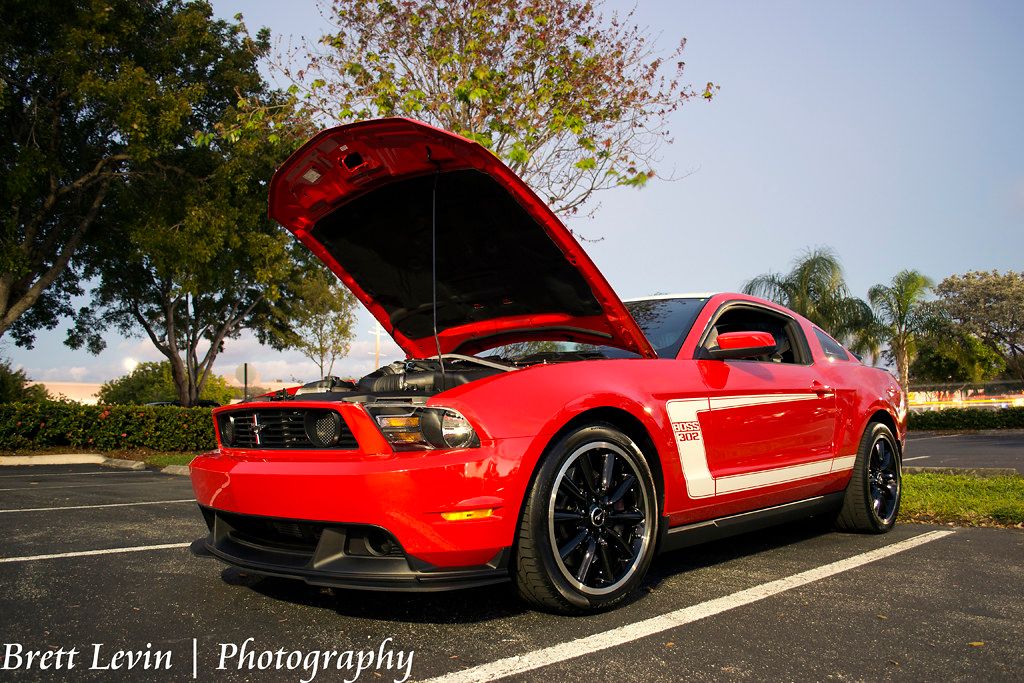
The world of classic cars is a vibrant tapestry, woven with threads of nostalgia, engineering marvels, and cultural significance. For many Baby Boomers, these vehicles represent more than just transportation; they are tangible memories, symbols of freedom, and reflections of an era that shaped their youth. Yet, as the automotive landscape evolves and new generations come of age, the appeal of these cherished classics often falls flat with Millennials.
The generational divide in automotive preferences is not merely about taste; it’s a profound clash of values, priorities, and lived experiences. While Boomers fondly recall the roaring engines, chrome accents, and sheer road presence of their era’s automobiles, Millennials, often burdened by student debt and an acute awareness of environmental impact, tend to prioritize fuel efficiency, modern technology, safety, and practicality. This divergence creates a fascinating paradox where one generation’s treasured icon becomes another’s perplexing relic.
This article embarks on an in-depth exploration of 14 such classic cars, dissecting why they hold a special place in the hearts of Baby Boomers, and conversely, why Millennials often find themselves wanting nothing to do with them. We’ll delve into the specific attributes, historical contexts, and cultural narratives that fuel this automotive generational gap, offering a nuanced look at what makes a classic car truly ‘cool’ across different eras.
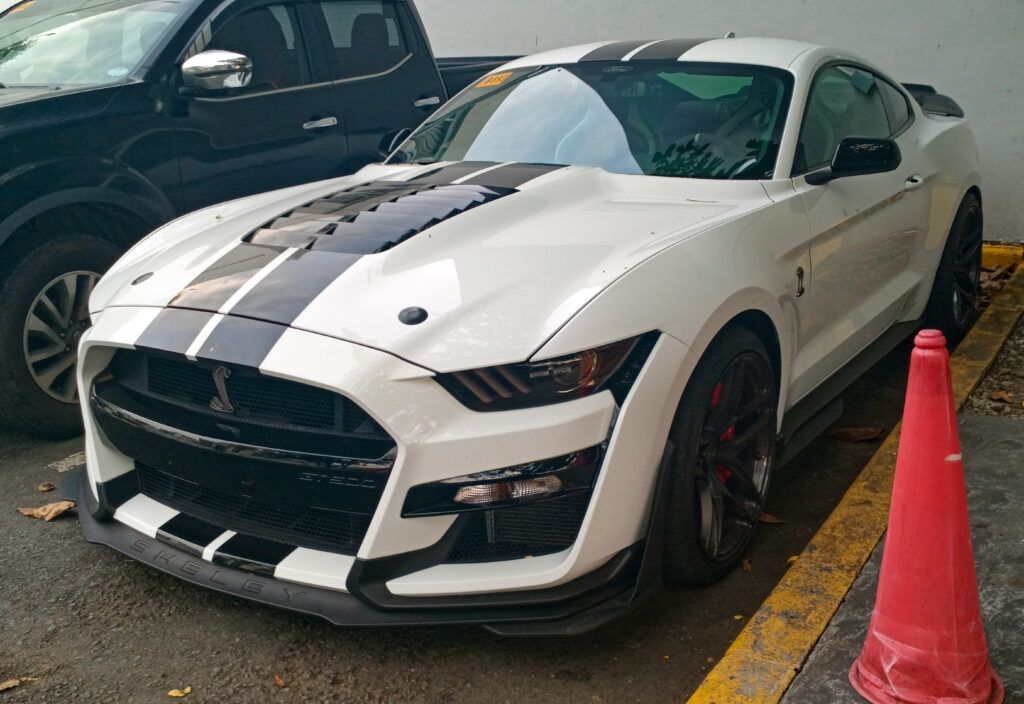
1. **Ford Mustang II**For Baby Boomers, the Ford Mustang II holds a particular kind of nostalgic appeal, often viewed as a resilient continuation of the legendary Mustang lineage, particularly significant during the turbulent fuel crisis era of the 1970s. Introduced in 1974, this iteration of the Mustang was a direct response to rising gas prices and a demand for more economical vehicles. It represented Ford’s attempt to downsize and adapt the pony car to a new market reality, aiming for a more European-inspired design and improved fuel economy, a stark departure from the raw power of its predecessors.
Boomers might remember the Mustang II as a symbol of adaptability and practical motoring, a car that offered a familiar nameplate in an unfamiliar economic climate. Its smaller footprint and focus on efficiency were seen by some as a necessary evolution, a smart move by Ford to keep the Mustang relevant. Despite its eventual critical reception, for those who lived through its initial release, it represented a moment when American cars were forced to change, and the Mustang name carried a certain hope for the future.
However, Millennials often harbor a much less forgiving view of the Ford Mustang II. Their criticism is sharp, frequently centering on the perception that it strayed too far from its roots, offering underwhelming performance and a bland design. Compared to the iconic, aggressive lines and powerful engines of the original 1960s Mustangs, the Mustang II’s styling is often seen as uninspired, lacking the visual punch and raw muscle car aesthetics that define the breed. Younger enthusiasts struggle to reconcile this more subdued, economy-focused model with the wild spirit they associate with the Mustang brand.
The underwhelming performance is another significant sticking point for Millennials. In an era where even entry-level cars offer spirited driving dynamics, the modest engines and chassis of the Mustang II feel profoundly archaic and unengaging. The disconnect between the revered Mustang name and this particular model’s perceived failings makes it a difficult car for younger generations to appreciate, often becoming a punchline rather than a prized classic. It stands as a prime example of a car designed for its specific time, whose compromises do not translate well to modern automotive sensibilities.
Car Model Information: 2021 Jeep Grand Cherokee Laredo X
Name: Second generation
Caption: Ford Mustang II coupe
Aka: Ford Mustang II , Ford T5 (in Germany)
Class: Pony car,Subcompact car
Production: 1973–1978
ModelYears: 1974–1978
Predecessor: Ford Mustang (first generation)
Successor: Ford Mustang (third generation)
Assembly: Unbulleted list
Layout: Front-engine, rear-wheel-drive layout
BodyStyle: coupé,hatchback
Related: Ford Pinto,Ford Pinto
Manufacturer: Ford Motor Company
Engine: ubl
Transmission: ubl
Wheelbase: cvt
Length: cvt
Width: cvt
Height: cvt
Designer: Buck Mook, Dick Nesbitt
Categories: All articles with dead external links, All articles with unsourced statements, Articles with dead external links from April 2024, Articles with permanently dead external links, Articles with short description
Summary: The second-generation Ford Mustang, marketed as the Ford Mustang II, is a two- or three-door, four-passenger, front-engine/rear-drive pony car manufactured and marketed by Ford from 1973 until 1978. Introduced in September 1973 for the 1974 model year, the Mustang II arrived roughly coincident with the oil embargo of 1973 and subsequent fuel shortages. Developed under Lee Iacocca, it was an “entirely new kind of pony car.” Ford “decided to call it Mustang II, since it was a new type of pony car designed for an era of high gas prices and fuel shortages.”
The Mustang II was 490 lb (222 kg) lighter and almost 19 in (483 mm) shorter than the 1973 Mustang, and derived from the subcompact Pinto platform. While sharing a limited number of driveline components with the Pinto, the Mustang II employed an exclusive subframe, isolating its front suspension and engine mount subframe. The steering used a rack-and-pinion design.
Named Motor Trend’s 1974 Car of the Year and reaching over 1.1 million sales over four years of production, the Mustang II is noted simultaneously for both its marketing prescience and strong sales – while criticized as having abandoned essential aspects of the Mustang heritage and described, in a retrospective after 40 years since its introduction, as embodying the Malaise era.
Get more information about: Ford Mustang (second generation)
Buying a high-performing used car >>>
Brand: Ford Model: Mustang II
Price: $27,316 Mileage: 34,523 mi.
Read more about: Boomer Dream Machines: 14 Classic Car Icons Millennials Are Overlooking and Why They’re Missing the Mark
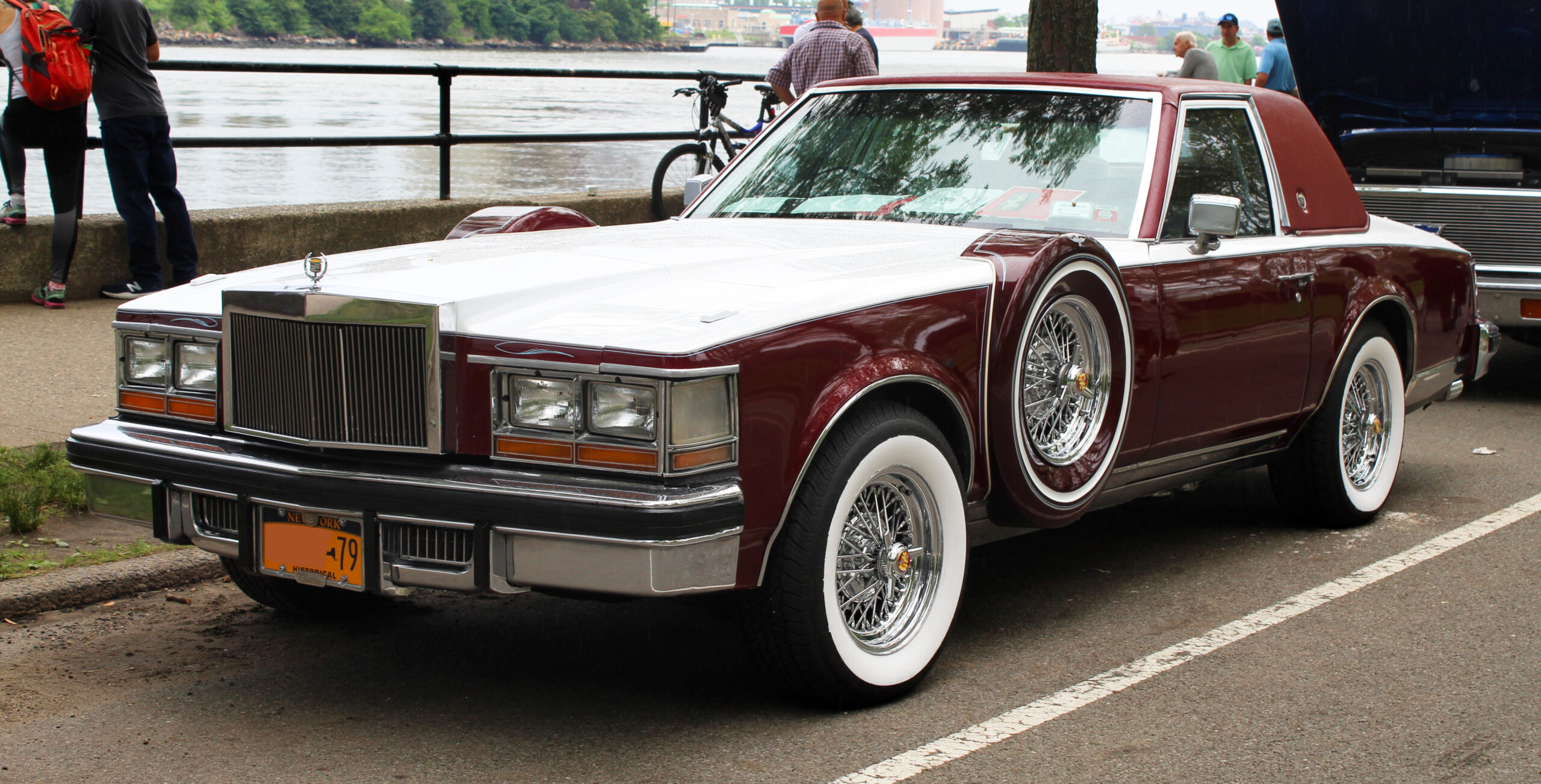
2. **Cadillac Seville**To Baby Boomers, the Cadillac Seville was once the epitome of American luxury, a premium sedan that offered a compelling blend of comfort and style, specifically designed to compete with the growing popularity of European imports in the 1970s. It represented a slightly more manageable size for a Cadillac, yet still delivered on the brand’s promise of opulence, a smooth ride, and prestigious presence. Boomers recall it as a sophisticated choice, a status symbol that conveyed success and a taste for refined American engineering.
The Seville, in its prime, was seen as a forward-thinking Cadillac, a move towards modern luxury while retaining the spacious interiors and plush appointments that the brand was known for. It offered a quiet cabin, comfortable seating, and a commanding road presence that resonated with the desire for prestige and effortless cruising. This car embodied the aspirations of an entire generation, representing a certain achievement and an embrace of the finer things in life, without the overt flamboyance of some earlier Cadillacs.
Millennials, however, tend to view the Cadillac Seville through a critical lens, seeing it as emblematic of the excesses of past American automotive design. Its large body and reputation for fuel inefficiency clash sharply with contemporary automotive values that prioritize environmental consciousness, compact design, and economical operation. For younger generations, the Seville represents a bygone era of unchecked consumption, where larger meant better and fuel costs were a secondary concern.
The generational shift towards smaller, more economical, and environmentally friendly vehicles makes the Seville appear outdated and impractical. Its sheer size is often perceived as cumbersome for urban driving and parking, while its thirst for fuel is simply unpalatable in today’s context of rising gas prices and climate change awareness. Consequently, what was once a symbol of prestige for Boomers becomes a symbol of automotive excess and inefficiency for Millennials, reflecting a fundamental difference in how each generation approaches vehicle ownership and its broader societal impact.
Car Model Information: 2002 Cadillac Seville Base
Name: Cadillac Seville
Caption: 1998–2004 Cadillac Seville
Manufacturer: Cadillac
Production: 1975–2003
ModelYears: 1976–2004
Class: luxury car
Layout: FR layout
Predecessor: Cadillac Calais
Successor: Cadillac STS
Categories: 1980s cars, 1990s cars, All articles with unsourced statements, Articles with short description, Articles with unsourced statements from October 2016
Summary: The Cadillac Seville is a mid-size luxury car manufactured by Cadillac from the 1976 to 2004 model years as a smaller-sized, premium model. It was replaced by the STS in 2004 for the 2005 model year.
Get more information about: Cadillac Seville
Buying a high-performing used car >>>
Brand: Cadillac Model: Seville
Price: $4,987 Mileage: 104,812 mi.
Read more about: Unpacking the Generational Divide: 14 Classic Boomer Cars Millennials Just Aren’t Craving – And Why
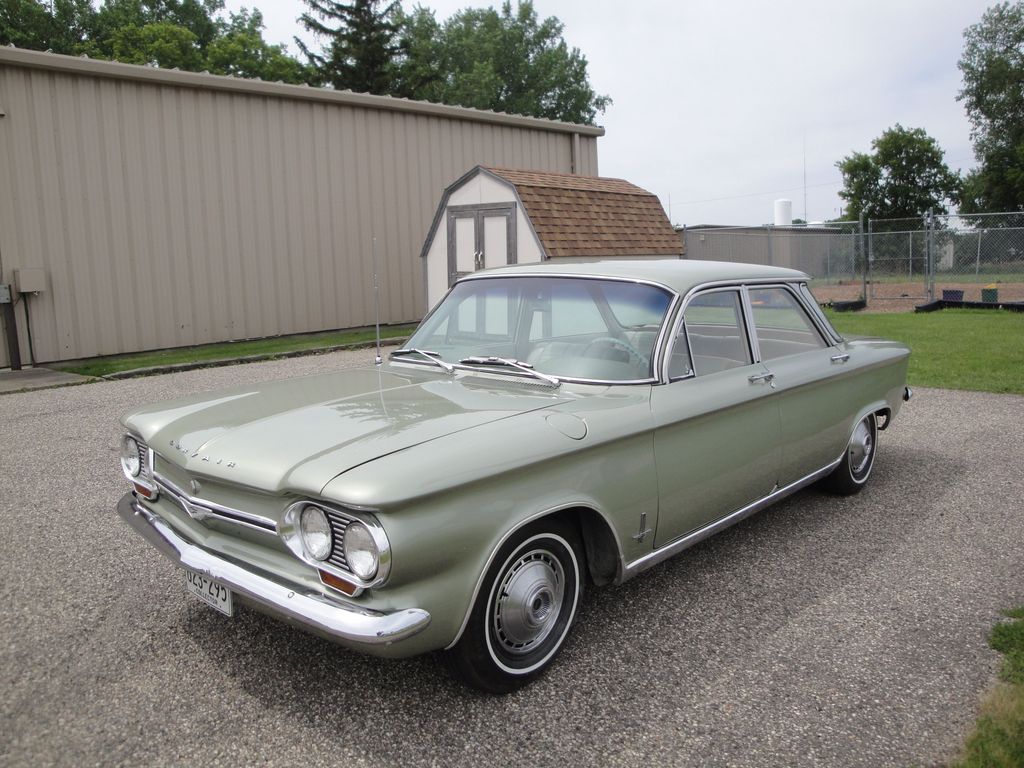
3. **Chevrolet Corvair**The Chevrolet Corvair holds a unique and somewhat controversial place in automotive history, yet for Baby Boomers, its innovative design and engineering captivated many during its production run. Boasting a rear-mounted, air-cooled engine, the Corvair was a radical departure from conventional American car design, drawing inspiration from European compacts like the Volkswagen Beetle. This innovative approach, coupled with its distinctive styling, positioned the Corvair as a bold experiment, a car that truly attempted to break the mold of what an American family vehicle could be.
Boomers who appreciated engineering novelty and a unique driving experience were drawn to the Corvair. Its compact size, combined with the novelty of its engine placement and air-cooling system, offered something different in a market often dominated by front-engine, water-cooled behemoths. For many, it represented Chevrolet’s willingness to innovate and push boundaries, making it a conversation piece and a car with a distinct personality that stood out from the crowd.
Unfortunately, the Corvair’s legacy is heavily shadowed by its handling issues and safety concerns, famously highlighted in Ralph Nader’s book, ‘Unsafe at Any Speed.’ While later models addressed many of these problems, the initial reputation has proven incredibly difficult to shake, especially for Millennials. Younger enthusiasts, armed with historical knowledge and a heightened awareness of safety standards, often criticize the Corvair precisely for these perceived flaws, making it less desirable among them.
The narratives surrounding the Corvair’s safety record are a significant barrier to Millennial appreciation. Despite its innovative aspects, the car’s association with handling instability, particularly in early models, overshadows its design merits. For a generation that expects robust safety features and predictable driving dynamics as standard, the Corvair’s historical baggage makes it a difficult car to embrace, regardless of its original intent or later improvements. It becomes a cautionary tale of engineering rather than a revered classic.
Car Model Information: 1964 Chevrolet Corvair Monza
Caption: 1964 Chevrolet Corvair Monza
Name: Chevrolet Corvair
Manufacturer: Chevrolet
Production: 1960–1969
Platform: GM Z platform
Chassis: Unibody
ModelYears: 1960–1969
Assembly: United States,Kansas City, Missouri,Oakland, California,Van Nuys,St. Louis,Flint, Michigan,Belgium,Canada,Mexico,South Africa,Switzerland,Venezuela
Class: Compact car
Successor: Chevrolet Vega
Layout: Rear-engine, rear-wheel-drive layout
Categories: All Wikipedia articles written in American English, All articles lacking in-text citations, All articles needing additional references, All articles with dead external links, All articles with specifically marked weasel-worded phrases
Summary: The Chevrolet Corvair is a rear-engined, air-cooled compact car manufactured and marketed by Chevrolet over two generations between 1960 and 1969. The Corvair was a response to the increasing popularity of small, fuel-efficient automobiles, particularly the imported Volkswagen Beetle and the success of American-built compacts like the Rambler American and Studebaker Lark.
The first generation (1960–1964) was offered as a four-door sedan, two-door coupe, convertible, and four-door station wagon. A two- and four-door hardtop and a convertible were available second generation (1965–1969) variants. The Corvair platform was also offered as a subseries known as the Corvair 95 (1961–1965), which consisted of a passenger van, commercial van, and pickup truck variant. Total production was approximately 1.8 million vehicles from 1960 until 1969.
The name “Corvair” was first applied in 1954 to a Corvette-based concept with a hardtop fastback-styled roof, part of the Motorama traveling exhibition. When applied to the production models, the “air” part referenced the engine’s cooling system.
A prominent aspect of the Corvair’s legacy derives from controversy surrounding its handling, articulated aggressively by Ralph Nader’s Unsafe at Any Speed and tempered by a 1972 Texas A&M University safety commission report for the National Highway Traffic Safety Administration (NHTSA) which found that the 1960–1963 Corvair possessed no greater potential for loss of control in extreme situations than contemporary compacts.
To better counter popular inexpensive subcompact competitors, notably the Beetle and Japanese imports such as the Datsun 510, GM replaced the Corvair with the more conventional Chevrolet Vega in 1970.
Get more information about: Chevrolet Corvair
Buying a high-performing used car >>>
Brand: Chevrolet Model: Corvair
Price: $29,988 Mileage: 74,787 mi.
Read more about: Unpacking the Generational Divide: 14 Classic Boomer Cars Millennials Just Aren’t Craving – And Why
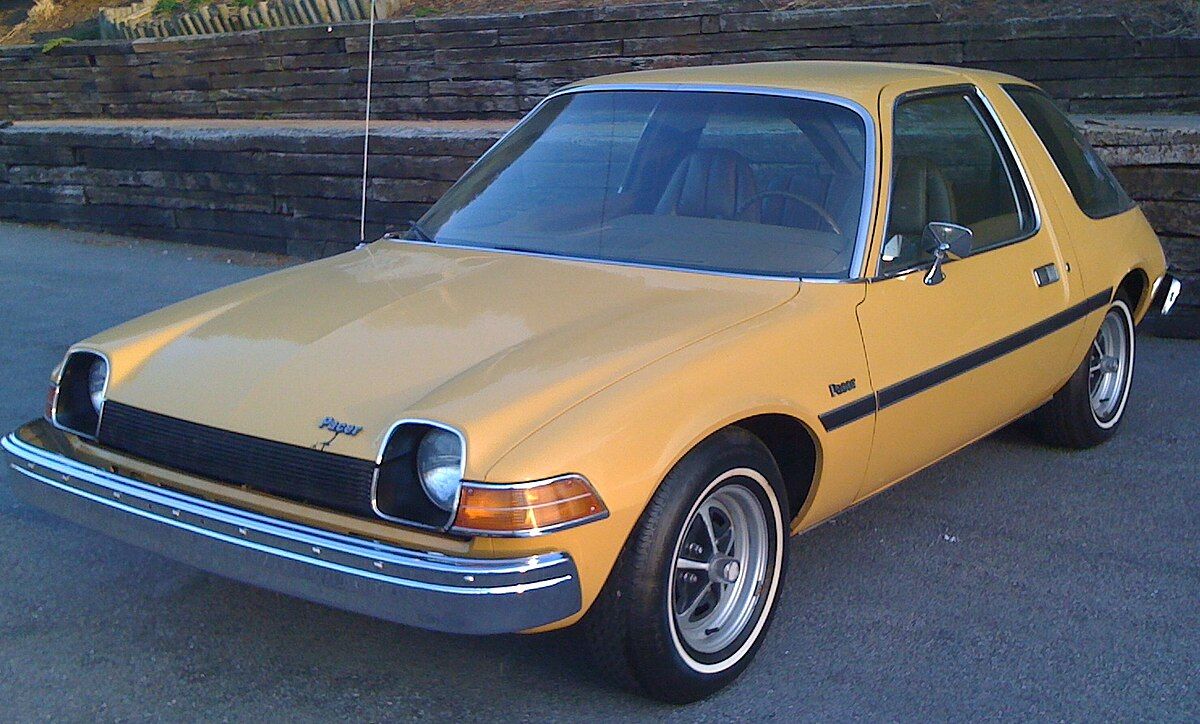
4. **AMC Pacer**The AMC Pacer was a car that dared to be different, and for Baby Boomers, it was once touted for its innovation and unique, unconventional styling. Launched in the mid-1970s, the Pacer was marketed as “the first wide small car,” designed to offer interior spaciousness comparable to larger vehicles while maintaining a compact exterior. Its distinctive bubble-like appearance, large glass area, and asymmetrical door lengths (driver’s door shorter than passenger’s for easier access) were seen as bold attempts at breaking traditional automotive design norms.
Boomers who valued practicality combined with a desire for something visually distinct might have found the Pacer appealing. It offered a panoramic view from within, a sense of openness, and a comfortable ride for its size, aiming to redefine the compact car experience. For a segment of the population, it was a quirky, lovable car that represented American Motors’ willingness to experiment and offer consumers something truly out of the ordinary during a period of significant change in the automotive industry.
However, Millennials tend to regard the Pacer very differently, often making fun of its bubble-like appearance and perceiving it as oddly shaped and inefficient. What was once seen as innovative by Boomers is now viewed more as a design misstep rather than a mark of brilliance. The Pacer’s unconventional aesthetics clash with younger generations’ preferences for sleek, aerodynamic, and generally more conventional vehicle silhouettes. Its peculiar proportions and vast glass panels are often a source of amusement or bewilderment rather than admiration.
The inefficiency criticisms from Millennials also stem from the Pacer’s power-to-weight ratio and its eventual reputation. Despite its “small car” marketing, it wasn’t particularly fuel-efficient by later standards, and its engines often struggled with the car’s relatively heavy body. This combination of an unusual aesthetic that hasn’t aged gracefully and perceived performance shortcomings makes the AMC Pacer a challenging classic for Millennials to connect with, solidifying its status as an oddity rather than an icon in their eyes.
Read more about: Unpacking the Generational Divide: 14 Classic Boomer Cars Millennials Just Aren’t Craving – And Why
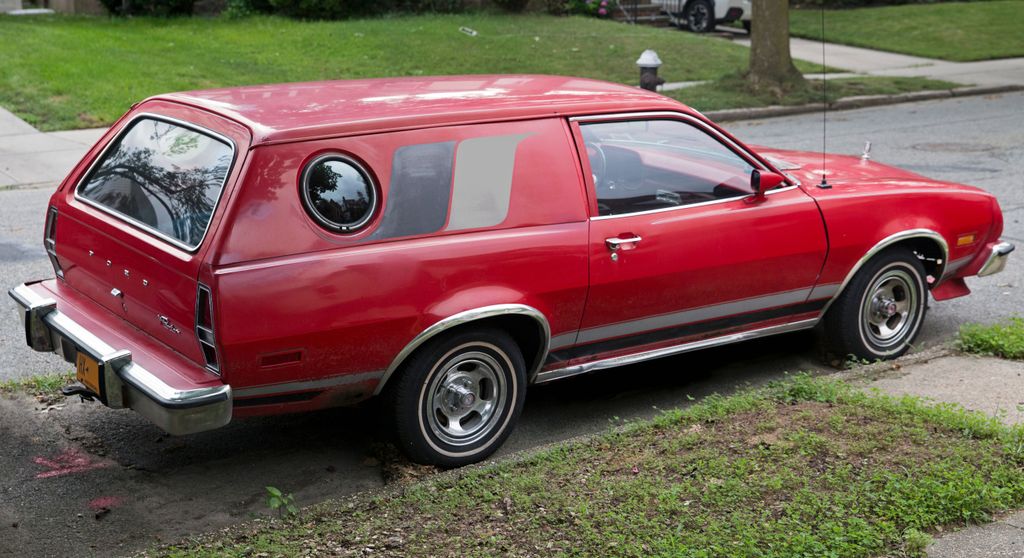
5. **Ford Pinto**For Baby Boomers, the Ford Pinto might evoke memories of a simpler time, when affordability and practicality were paramount concerns for young families and first-time car buyers. During its popularity in the 1970s, the Pinto was marketed as an economical, compact solution for the masses, a reliable choice for daily commuting and basic transportation. Boomers might reminisce about its low purchase price, its straightforward engineering, and its role as an accessible vehicle that served its purpose well during their youth.
In an era before stringent safety regulations became standard, the Pinto provided basic mobility for millions. For many, it was simply a car that allowed them to get to work, run errands, or embark on short road trips without breaking the bank. Its compact size and no-frills approach resonated with the practical needs of many consumers, making it a ubiquitous sight on American roads and a common first car for a generation coming of age.
However, the Ford Pinto has become notorious for its severe safety issues, particularly the risk of its fuel tank catching fire upon rear impact. This dark chapter in its history means that Millennials almost universally see the Pinto as dangerous, a symbol of corporate negligence rather than practical motoring. The widespread media coverage, recalls, and legal battles associated with the Pinto’s design flaws have solidified its reputation as one of the most hazardous cars in automotive history, casting a long shadow over any positive attributes it might have once possessed.
For Millennials, who grew up with increasingly sophisticated safety standards and a heightened awareness of vehicle occupant protection, the Pinto’s historical safety record is an insurmountable barrier to appreciation. The concept of a car being a fire hazard due to a design flaw is antithetical to their understanding of what constitutes an acceptable vehicle. This stark contrast in perception underscores how different generational priorities—affordability versus safety—can completely redefine a car’s legacy, transforming a common utility vehicle into a cautionary tale about industrial design and ethics.
Car Model Information: 1978 Ford Pinto RUNABOUT HATCHBACK
Name: Ford Pinto
Caption: Ford Pinto
Manufacturer: Ford Motor Company
Aka: Mercury Bobcat
Production: September 1970 – July 1980
ModelYears: 1971–1980 (Pinto),1974–1980 (Bobcat)
Assembly: Edison, New Jersey,Milpitas, California
Designer: Robert Eidschun (1968)
Class: Subcompact car
BodyStyle: Sedan (automobile),sedan delivery,station wagon,hatchback
Related: #Mercury Bobcat (1974–1980),Ford Mustang (second generation)
Layout: Front-engine, rear-wheel-drive layout
Chassis: Unibody
Engine: unbulleted list
Abbr: on
Disp: Ford Cologne engine
Transmission: unbulleted list
Wheelbase: 94.0 in
Length: 163 in
Width: 69.4 in
Height: 50 in
Weight: convert
Predecessor: Ford Cortina#Mark II (1966–1970)
Successor: Ford Escort (North America)
Categories: 1980s cars, Articles with short description, Cars discontinued in 1980, Cars introduced in 1970, Commons category link from Wikidata
Summary: The Ford Pinto is a subcompact car that was manufactured and marketed by Ford Motor Company in North America from 1970 until 1980. The Pinto was the first subcompact vehicle produced by Ford in North America.
The Pinto was marketed in three body styles throughout its production: a two-door fastback sedan with a trunk, a three-door hatchback, and a two-door station wagon. Mercury offered rebadged versions of the Pinto as the Mercury Bobcat from 1975 until 1980 (1974–1980 in Canada). Over three million Pintos were produced over its ten-year production run, outproducing the combined totals of its domestic rivals, the Chevrolet Vega and the AMC Gremlin. The Pinto and Mercury Bobcat were produced at Edison Assembly in Edison, New Jersey, St. Thomas Assembly in Southwold, Ontario, and San Jose Assembly in Milpitas, California.
Since the 1970s, the safety reputation of the Pinto has generated controversy. Its fuel-tank design attracted both media and government scrutiny after several deadly fires occurred when the tanks ruptured in rear-end collisions. A subsequent analysis of the overall safety of the Pinto suggested it was comparable to other 1970s subcompact cars. The safety issues surrounding the Pinto and the subsequent response by Ford have been cited widely as business ethics and tort reform case studies.
Get more information about: Ford Pinto
Buying a high-performing used car >>>
Brand: Ford Model: Pinto
Price: $19,000 Mileage: 91,000 mi.
Read more about: Unpacking the Generational Divide: 14 Classic Boomer Cars Millennials Just Aren’t Craving – And Why
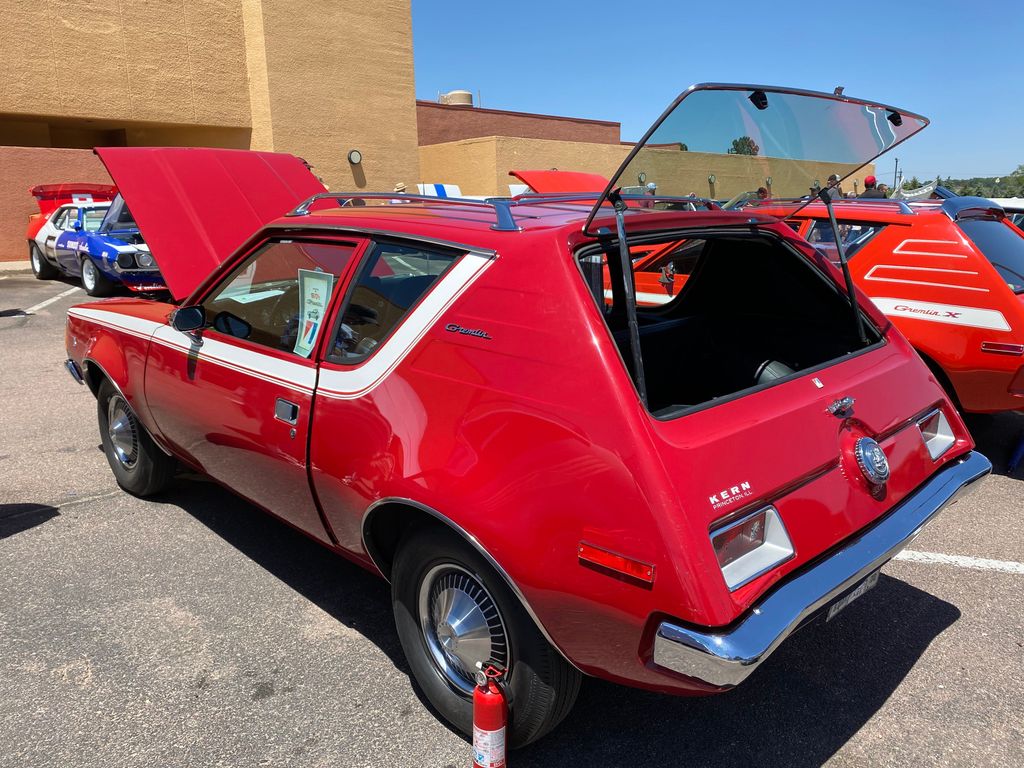
6. **AMC Gremlin**The AMC Gremlin, with its distinctive and rather polarizing design, often elicits a sense of nostalgia from Baby Boomers. Introduced in 1970, the Gremlin was AMC’s bold entry into the subcompact market, characterized by its truncated rear end and a unique, somewhat unconventional aesthetic that blended a compact front with an abrupt, Kammback-style tail. For Boomers, this car’s unusual appearance was part of its charm; it was a conversation starter, a vehicle that proudly marched to the beat of its own drum and stood out in a sea of more conventional sedans.
Boomers might recall the Gremlin as an affordable and practical option for its time, a car that offered distinctive styling without the high price tag. It represented a playful, daring side of American car manufacturing, appealing to those who sought individuality and weren’t afraid to drive something truly different. Its compact size also offered a degree of maneuverability and fuel economy that was becoming increasingly important, making it a viable option for diverse buyers looking for a quirky, functional vehicle.
However, Millennials tend to harbor a strong dislike for the Gremlin, primarily due to its unusual aesthetics and what they perceive as less-than-stellar performance metrics. The very design cues that Boomers might view with nostalgia — its chopped rear and eccentric proportions — are often considered by younger generations to be awkward, unappealing, or even outright ugly. The Gremlin’s distinctive profile simply doesn’t align with modern design sensibilities, which favor sleeker lines and more cohesive forms.
Beyond aesthetics, the Gremlin’s performance often leaves Millennials unimpressed. While adequate for its era, its engines and handling characteristics do not stand up to contemporary expectations for driving dynamics. The combination of its polarizing visual design and its uninspiring mechanicals makes it a difficult classic for Millennials to appreciate. It remains an automotive curiosity, perhaps interesting for its uniqueness, but rarely seen as a desirable or ‘cool’ vintage car, cementing its status as a stylistic oddity across generations.
Read more about: Unpacking the Generational Divide: 14 Classic Boomer Cars Millennials Just Aren’t Craving – And Why
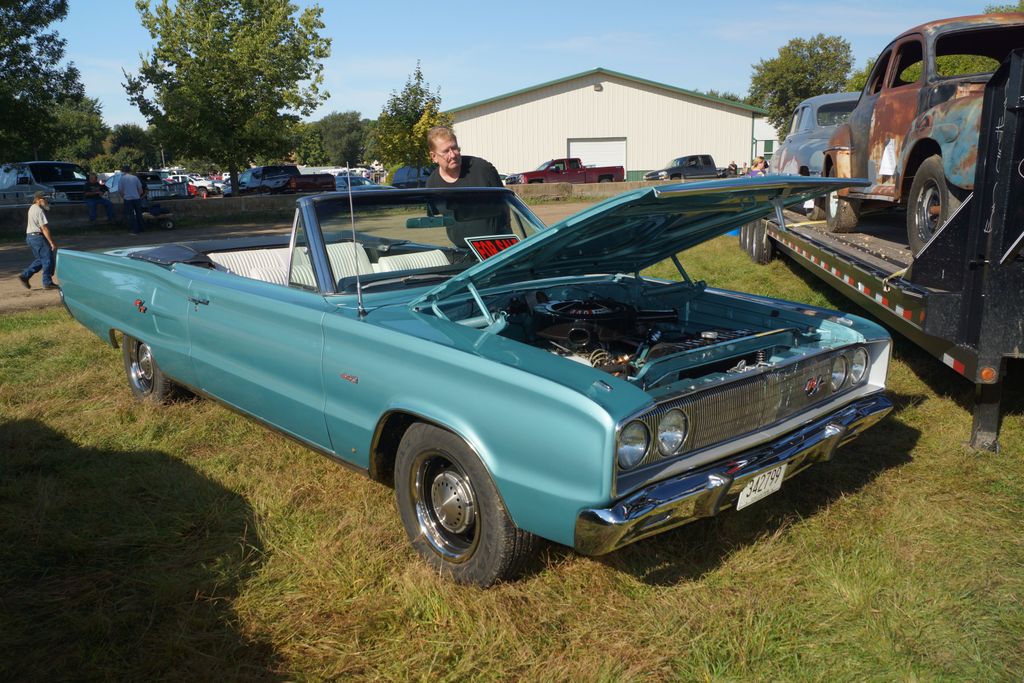
7. **Dodge Coronet**For Baby Boomers, the Dodge Coronet was widely regarded as a solid, reliable family car, particularly during its peak in the 1960s. It was a staple of American households, known for its spacious interior, robust construction, and dependable performance. The Coronet offered a practical yet comfortable driving experience, serving as a workhorse for many families across various trim levels, from basic sedans to more performance-oriented models. It embodied the quintessential American family vehicle of its time, capable of handling daily commutes and long road trips with equal ease.
Boomers appreciated the Coronet for its straightforward utility and its ability to blend into the suburban landscape without fuss. It wasn’t always the flashiest car on the road, but its reliability and no-nonsense approach to motoring made it a trusted companion. For many, it symbolized the stability and conventionalism of the post-war era, a dependable car that fulfilled its role without requiring excessive maintenance or drawing undue attention, a true testament to everyday practicality.
Millennials, conversely, often dismiss the Dodge Coronet for what they perceive as its plain design and large size, which appears significantly out of step with contemporary automotive values of style and efficiency. For a generation accustomed to more sculpted, aerodynamic, and often smaller vehicle designs, the Coronet’s boxy, unadorned aesthetics can come across as uninspired or simply boring. Its utilitarian appearance, which was a virtue for Boomers, now translates into a lack of visual excitement for younger eyes.
The large size of the Coronet is another significant deterrent for Millennials. In an age where urban living and environmental concerns drive preferences for compact, fuel-efficient vehicles, the Coronet’s expansive dimensions are seen as impractical and wasteful. Its scale, combined with its relatively plain styling, makes it challenging for Millennials to appreciate as a classic. It doesn’t possess the aggressive muscle car appeal of some contemporaries nor the quirky charm of other vintage vehicles, leaving it in a difficult position for a generation that values distinctiveness and efficiency over sheer size and unassuming reliability.
Bridging the Divide: Exploring Seven Additional Automotive Icons Where Boomer Nostalgia Meets Millennial Disinterest, Examining Everything from the Eldorado’s Excess to the Bel Air’s Puzzling Appeal.
As we continue our exploration into the fascinating automotive generational gap, it becomes clear that the divide is rooted deeply in differing values and lived experiences. What one generation views as a pinnacle of engineering or design, another sees as an anachronism, ill-suited for the demands of modern life. This next set of classic cars further illuminates this cultural rift, showcasing how shifting priorities can dramatically alter a vehicle’s legacy.
Car Model Information: 1967 Dodge Coronet Restomod
Name: Dodge Coronet
Caption: 1967 Dodge Coronet R/T
Manufacturer: Dodge
Production: 1949–1959,1965–1976
Class: Full-size
Predecessor: Dodge Custom
Successor: Dodge Dart
Layout: FR layout
Categories: 1950s cars, 1970s cars, All articles with dead external links, All articles with unsourced statements, Articles with dead external links from June 2016
Summary: The Dodge Coronet is an automobile that was marketed by Dodge in seven generations, and shared nameplates with the same bodyshell with varying levels of equipment installed. Introduced as a full-size car in 1949, it was the division’s highest trim line and moved to the lowest level starting in 1955 through 1959. The name was reintroduced on intermediate-sized models from the 1965 until 1976 model years. Muscle car versions were available starting in 1965 with the 383 and 426 wedge cu in (7.0 L) Chrysler RB engine, followed in 1966 by the powerful 426 cu in (7.0 L) Chrysler Hemi. Other performance models included the “Superbee”, and featured, the 383 cu in (6.3 L) Magnum, among other engine options. The nameplate “coronet” is a type of crown worn by royalty.
In the 1980s, the Coronet was used on Dodge models marketed in Colombia.
Get more information about: Dodge Coronet
Buying a high-performing used car >>>
Brand: Dodge Model: Coronet
Price: $46,500 Mileage: 2,818 mi.
Read more about: Boomer Dream Machines: 14 Classic Car Icons Millennials Are Overlooking and Why They’re Missing the Mark

8. **Cadillac Eldorado**For Baby Boomers, the Cadillac Eldorado was once the undisputed symbol of luxury and high status, a grand statement that spoke volumes about its owner’s success and taste. Cherished for its opulent features and unparalleled comfort, the Eldorado represented the pinnacle of American automotive aspiration. It wasn’t just a car; it was a testament to an era when bigger truly meant better, and where the journey was as much about the presence one commanded as the destination itself.
Boomers might fondly recall the Eldorado as a “living room on wheels”—a massive, chrome-adorned machine designed to glide effortlessly, offering plush seats and an abundance of legroom. This car was all about going fast in style, prioritizing a smooth, luxurious ride that epitomized the grandeur and carefree spirit of its time. It showcased a vision of luxury that was expansive, unreserved, and unequivocally American.
Millennials, however, approach the Cadillac Eldorado with a far more critical eye, often dismissing it as an emblem of past excess. Its sheer, uncompromising size and notorious reputation for poor fuel efficiency clash directly with contemporary values that emphasize environmental consciousness and practical, economical operation. For younger generations, the Eldorado doesn’t evoke aspiration but rather represents a bygone era of unchecked consumption and design.
The profound disconnect here stems from a fundamental shift in priorities. Millennials frequently wonder why anyone would need such a massive vehicle for a daily commute in today’s urbanized world. Its lavish dimensions and thirst for fuel are not merely aesthetic issues but practical barriers, rendering what was once a status symbol into an inefficient and cumbersome relic that struggles to find relevance in a generation acutely aware of its carbon footprint.
Car Model Information: 1984 Cadillac Eldorado
Caption: 1963 Cadillac Eldorado Convertible
Name: Cadillac Eldorado
Manufacturer: Cadillac
Production: 1952–2002
Layout: Front-engine, rear-wheel-drive layout
Aka: Cadillac Fleetwood Eldorado
Class: Personal luxury car
Successor: Cadillac CTS
Categories: 1960s cars, 1970s cars, 1980s cars, 1990s cars, 2000s cars
Summary: The Cadillac Eldorado is a luxury car manufactured and marketed by the Cadillac Motor Car Division of General Motors from 1952 until 2002, over twelve generations.
The Eldorado was at or near the top of the Cadillac product line. The original 1953 Eldorado convertible and the Eldorado Brougham models of 1957–1960 had distinct bodyshells and were the most expensive models offered by Cadillac during those years. The Eldorado was never less than second in price after the Cadillac Series 75 limousine until 1966. Beginning in 1967, the Eldorado retained its premium position in the Cadillac price structure, but was manufactured in high volumes on a unique, two-door personal luxury car platform.
The Eldorado carried the Fleetwood designation from 1965 through 1972, and was seen as a modern revival of the pre-war Cadillac V-12 and Cadillac V-16 roadsters and convertibles.
Get more information about: Cadillac Eldorado
Buying a high-performing used car >>>
Brand: Cadillac Model: Eldorado
Price: $13,990 Mileage: 50,720 mi.
Read more about: Boomer Dream Machines: 14 Classic Car Icons Millennials Are Overlooking and Why They’re Missing the Mark
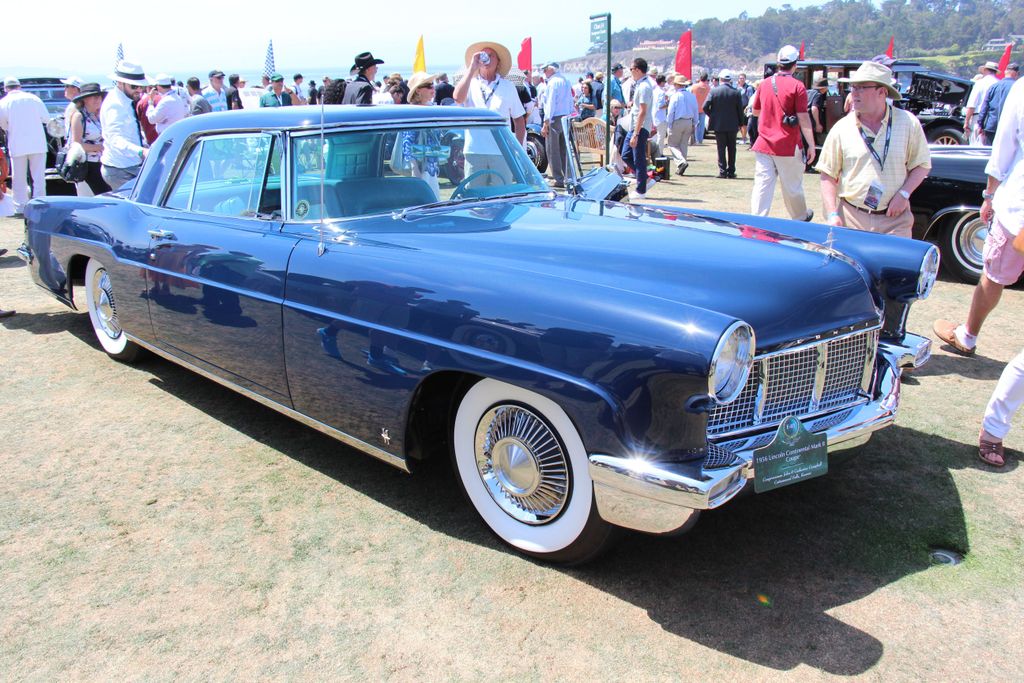
9. **Lincoln Continental with Suicide Doors**Iconic for its distinctive “suicide doors” that open rearward, the Lincoln Continental holds a truly special place in the hearts of Baby Boomers. This car was not merely a mode of transport; it represented the ultimate in luxury, an emblem of sophisticated design and prestigious ownership. Boomers admired its dignified presence and the sense of occasion that came with its unique door configuration, which offered unparalleled access and a flourish of elegance.
The Lincoln Continental, in its classic form, stood out for its timeless luxury and exceptional comfort. Boomers appreciated its remarkably spacious interiors, which felt more akin to a private lounge, and the sheer prestige that came with owning such a storied and culturally significant brand. It was a vehicle that exuded confidence and refined taste, a reflection of American automotive craftsmanship at its peak, defining an era of understated grandeur.
Conversely, Millennials often find the Lincoln Continental’s large, imposing design less appealing, viewing it through a lens of impracticality. Its considerable dimensions and the dramatic flair of its suicide doors, while visually striking, are often perceived as cumbersome and inefficient for the realities of today’s increasingly congested urban environments. This generation tends to prioritize nimble maneuverability and functional design over sheer size and traditional luxury statements.
The appeal of the Continental, for younger generations, is often overshadowed by its perceived lack of modern utility. What once symbolized ultimate luxury now appears as a design that struggles to adapt to current traffic patterns and parking challenges. The clash highlights a shift from a cultural appreciation for grand statements to a preference for vehicles that seamlessly integrate into a more practical, environmentally conscious daily life.
Car Model Information: 2018 Lincoln Continental Reserve
Name: Lincoln Continental
Caption: 2019 Lincoln Continental
Manufacturer: Lincoln Motor Company
Production: 1939–1942,1946–1948,1956–2002,2016–2020
ModelYears: 1940–1942,1946–1948,1958–1980,1982–2002,2017–2020
Class: Full-size car,luxury car
Layout: Longitudinal engine,Front-engine, rear-wheel-drive layout
Categories: 1930s cars, 1940s cars, 1950s cars, 1960s cars, 1970s cars
Summary: The Lincoln Continental is a series of mid-sized and full-sized luxury cars produced between 1939 and 2020 by Lincoln, a division of the American automaker Ford. The model line was introduced following the construction of a personal vehicle for Edsel Ford, who commissioned a coachbuilt 1939 Lincoln-Zephyr convertible, developed as a vacation vehicle to attract potential Lincoln buyers. In what would give the model line its name, the exterior was designed with European “continental” styling elements, including a rear-mounted spare tire.
In production for over 55 years across nine different decades, Lincoln has produced ten generations of the Continental. Within the Lincoln model line, the Continental has served several roles ranging from its flagship to its base-trim sedan. From 1961 to 1976, Lincoln sold the Continental as its exclusive model line. The model line has also gone on hiatus three times. From 1949 to 1955, the nameplate was briefly retired. In 1981, the Continental was renamed the Lincoln Town Car to accommodate the 1982 seventh-generation Continental. After 2002, the Continental was retired, largely replaced by the Lincoln MKS in 2009; in 2017, the tenth-generation Continental replaced the MKS.
As part of its entry into full-scale production, the first-generation Continental was the progenitor of an entirely new automotive segment, the personal luxury car. Following World War II, the segment evolved into coupes and convertibles larger than sports cars and grand touring cars with an emphasis on features, styling, and comfort over performance and handling. From 1956 to 1957, the Continental nameplate was the namesake of the short-lived Continental Division, marketing the 1956–1957 Continental Mark II as the worldwide flagship of Ford Motor Company; as a second successor, Ford introduced the Continental Mark series in 1969, produced over six generations to 1998.
Along with the creation of the personal luxury car segment, the Lincoln Continental marked the zenith of several designs in American automotive history. The Continental is the final American vehicle line with a factory-produced V12 engine (1948), the final four-door convertible (1967), and the final model line to undergo downsizing (for the 1980 model year).
American production of the Continental and MKZ, its only two sedans, ended in 2020 thereby making Lincoln a crossover/SUV-only brand in the US.
Get more information about: Lincoln Continental
Buying a high-performing used car >>>
Brand: Lincoln Model: Continental
Price: $22,523 Mileage: 86,549 mi.
Read more about: Why Millennials Are Swerving Away: Unpacking the Rejection of 12 Classic Boomer Cars
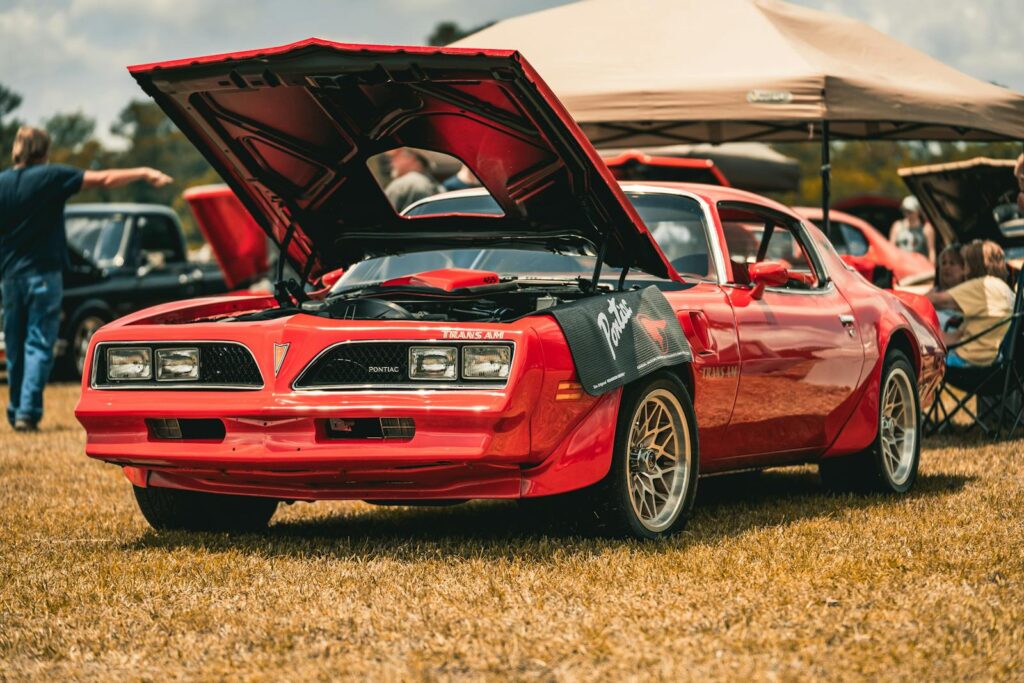
10. **Pontiac Trans Am**The Pontiac Trans Am roared onto the scene as a quintessential Boomer icon, deeply associated with high performance and bold, unyielding style. Celebrated prominently in numerous films and television shows throughout the 1970s and 80s, it carved out a place in popular culture as a symbol of freedom, rebellion, and raw American muscle. For Boomers, this car wasn’t just about getting from point A to B; it was about the thrill of the drive and making an unforgettable statement.
Boomers were drawn to the Trans Am’s aggressive stance, its powerful engines, and the sense of exhilaration it provided. It embodied a distinct kind of automotive swagger, a car with undeniable attitude that resonated with the desire for spirited driving and a youthful, rebellious spirit. The very essence of the muscle car era, with its focus on unapologetic power and striking aesthetics, was perfectly captured in the Trans Am’s design and performance.
However, Millennials often tend to overlook the Pontiac Trans Am, finding its perceived lack of sophistication and refinement a significant drawback when compared to contemporary sports cars. The raw, unbridled power and the loud, unapologetically bold presence that captivated Boomers can often translate into a feeling of being unrefined or even crude to a generation accustomed to precision engineering and advanced technological integration.
For Millennials, who often prioritize a balanced blend of performance, efficiency, and modern amenities, the Trans Am’s singular focus on brute force and visual flair can feel somewhat archaic. The idea of a “gas-guzzling commitment” for a vehicle that lacks the nuanced handling or technological prowess of newer models makes it a difficult classic for them to fully appreciate, despite its undeniable historical impact.
Car Model Information: 2021 Jeep Grand Cherokee Laredo X
Name: Pontiac Firebird
Caption: The second, third, and fourth generations of,the Pontiac Firebird Trans Am
Manufacturer: Pontiac (automobile)
Production: February 23, 1967 – August 30, 2002
ModelYears: 1967 – 2002
Class: Pony car,Muscle car
Platform: GM F platform
Related: Chevrolet Camaro
Layout: Front engine, rear-wheel-drive layout
Categories: 1970s cars, 1980s cars, 1990s cars, 2000s cars, All articles with dead external links
Summary: The Pontiac Firebird is an American automobile built and produced by Pontiac from the 1967 to 2002 model years. Designed as a pony car to compete with the Ford Mustang, it was introduced on February 23, 1967, five months after GM’s Chevrolet division’s platform-sharing Camaro. This also coincided with the release of the 1967 Mercury Cougar, Ford’s upscale, platform-sharing version of the Mustang.
The name “Firebird” was also previously used by GM for the General Motors Firebird series of concept cars in the 1950s.
Get more information about: Pontiac Firebird
Buying a high-performing used car >>>
Brand: Pontiac Model: Trans Am
Price: $27,316 Mileage: 34,523 mi.
Read more about: Boomer Dream Machines: 14 Classic Car Icons Millennials Are Overlooking and Why They’re Missing the Mark
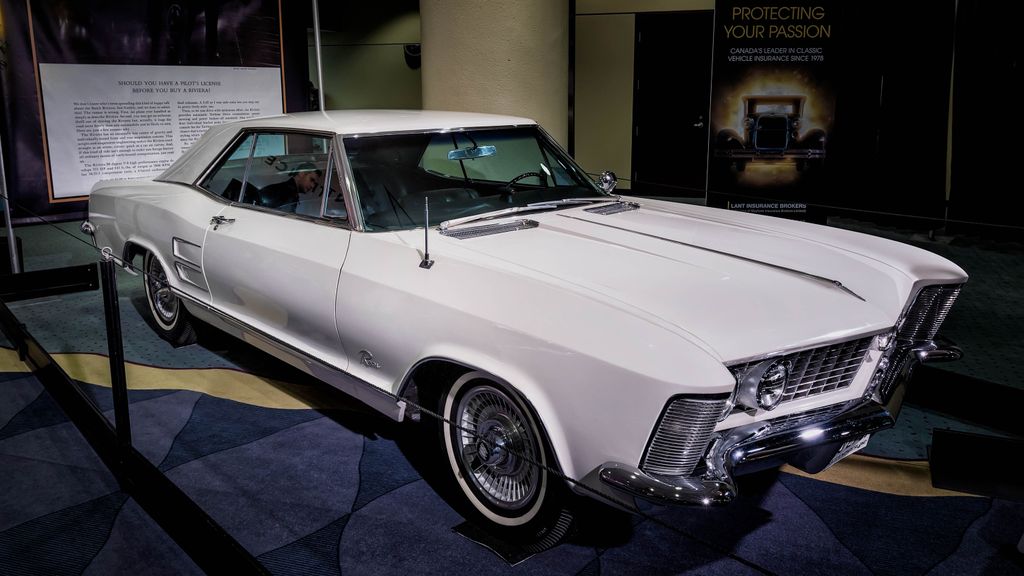
11. **Buick Riviera**The Buick Riviera, particularly those models boasting the distinctive “boat-tail” rear window, earned the admiration of Baby Boomers for its daring design and exceptionally smooth ride. It was a vehicle that truly stood apart, showcasing a willingness to push aesthetic boundaries while delivering a luxurious and comfortable driving experience. Boomers saw it as an elegant blend of performance and class, a car that conveyed sophistication without being overtly ostentatious.
In its prime, the Riviera was celebrated as a luxurious vehicle that offered “smooth rides with vintage touches.” Its long, low design and deluxe interiors spoke to an era that valued distinctive styling and a commanding road presence. For those in the 1970s seeking a car that combined strong performance with an undeniable sense of class, the Riviera was an almost irresistible choice, embodying a unique American luxury aesthetic.
Yet, Millennials often view the Buick Riviera very differently, frequently dismissing it as an outdated “gas-guzzler” with a design they find “too bold for their tastes.” What Boomers saw as daring and distinctive, younger generations often perceive as an aesthetic that has not aged gracefully, appearing heavy-handed or even awkward. The term “screenagers don’t find this car lux” perfectly encapsulates this generational divide in perception.
This clash highlights a divergence in what constitutes luxury and attractive design. Millennials lean towards sleeker, more understated forms, and prioritize fuel efficiency as a core value. The Riviera’s expressive, unapologetic styling and considerable fuel consumption, while once a mark of distinction, now contribute to its image as an impractical and stylistically puzzling classic for a generation that values modern, efficient elegance.
Car Model Information: 1971 Buick Riviera
Caption: 1963 Buick Riviera
Name: Buick Riviera
Predecessor: Buick Super
Manufacturer: Buick
ModelYears: 1963–1993,1995–1999
Class: Personal luxury car
Categories: 1960s cars, 1970s cars, 1980s cars, 1990s cars, All articles with specifically marked weasel-worded phrases
Summary: The Buick Riviera is a personal luxury car that was marketed by Buick from 1963 to 1999, with the exception of the 1994 model year.
As General Motors’ first entry into the personal luxury car market segment, the Riviera was highly praised by automotive journalists upon its high-profile debut. It was a ground-up design on a new GM E platform debuting for the 1963 model year and was also Buick’s first unique Riviera model.
Unlike its subsequent GM E platform stablemates, the Oldsmobile Toronado and Cadillac Eldorado, the Riviera was initially a front engine/rear-wheel drive platform, switching to front-wheel drive starting with the 1979 model year.
While the early models stayed close to their original form, eight subsequent generations varied substantially in size and styling. A total of 1,127,261 Rivieras were produced.
The Riviera name was resurrected for two concept cars that were displayed at auto shows in 2007 and in 2013.
Get more information about: Buick Riviera
Buying a high-performing used car >>>
Brand: Buick Model: Riviera
Price: $22,499 Mileage: 91,150 mi.
Read more about: Boomer Dream Machines: 14 Classic Car Icons Millennials Are Overlooking and Why They’re Missing the Mark
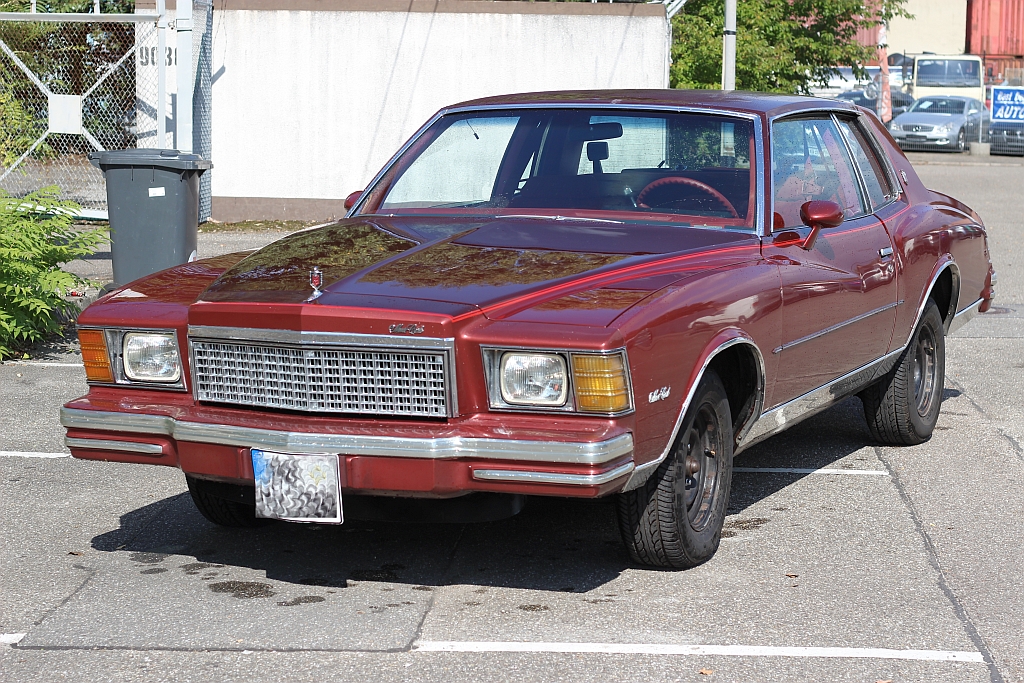
12. **Chevrolet Monte Carlo**For Baby Boomers, the Chevrolet Monte Carlo held a significant place as a stylish yet affordable luxury coupe during its heyday. It offered a compelling blend of personal comfort, distinctive lines, and a touch of sporty flair, making it an accessible aspiration for many. Boomers appreciated its ability to provide a feeling of upscale motoring without the exorbitant price tag of more exclusive luxury brands, establishing it as a popular choice for both daily driving and special occasions.
In its time, the Monte Carlo was a quintessential American cruiser, designed for comfort and smooth performance. It represented a particular kind of attainable sophistication, providing spacious interiors and a relaxed driving experience that resonated with the values of an era that prioritized style and personal expression. It was a common sight on roads, symbolizing a comfortable and confident lifestyle.
Millennials, conversely, often criticize the Monte Carlo for what they perceive as its bulky size and lackluster handling. The design, while stylish to Boomers, often appears ponderous and lacking in dynamic agility to younger eyes, who are accustomed to more precise steering and responsive chassis. The sheer mass and soft suspension characteristics fail to meet modern expectations for driving engagement and efficiency.
Even the Monte Carlo’s prominence in NASCAR history, an aspect that might evoke a sense of pride and excitement for Boomers, “does little to change younger generations’ perceptions.” For Millennials, the historical racing legacy cannot outweigh the car’s perceived practical shortcomings and dated driving dynamics, cementing its status as an interesting relic rather than a desirable classic for contemporary appreciation.
Car Model Information: 2021 Jeep Grand Cherokee Laredo X
Name: Chevrolet Monte Carlo
Manufacturer: Chevrolet
Production: 1969–1987,1994–2007
ModelYears: 1970–1988,1995–2007
Class: Personal luxury car
BodyStyle: coupé
Layout: FR layout
Caption: 2006 Chevrolet Monte Carlo LS
Categories: 1980s cars, 1990s cars, 2000s cars, All Wikipedia articles written in American English, All articles needing additional references
Summary: The Chevrolet Monte Carlo is a two-door coupe that was manufactured and marketed by the Chevrolet division of General Motors. Deriving its name from the city in Monaco, the Monte Carlo was marketed as the first personal luxury car of the Chevrolet brand. Introduced for the 1970 model year, the model line was produced across six generations through the 2007 model year, with a hiatus from 1989 until 1994. The Monte Carlo was a variant of the Pontiac Grand Prix throughout its production.
From 1970 until 1972, the Monte Carlo rode on the unique “A-Special” platform with the Grand Prix, shifting to the standard A-body intermediate chassis from the 1973 through 1977 model years. For 1978, the Monte Carlo line underwent downsizing, but was still considered a midsized coupe. The rear-wheel drive A-body platform of this generation of Monte Carlo was redesignated as the G-body when GM’s front-wheel drive A-body cars were introduced for the 1982 model year. After an abbreviated 1988 model year, the Monte Carlo was replaced by the two-door Chevrolet Lumina.
For the 1995 model year, the Monte Carlo was revived, replacing the two-door Lumina. It shared the front-wheel drive W-platform with the two-door Grand Prix, and was the largest coupe in the Chevrolet lineup. After the 2002 model year, the Grand Prix coupe was discontinued, the Monte Carlo became the largest two-door model produced by an American auto manufacturer.
In response to declining sales of the model line, Chevrolet discontinued the Monte Carlo after the 2007 model year. During much of its production, the Monte Carlo represented the Chevrolet brand in stock car racing. During the 1980s, the Monte Carlo SS was introduced, featuring aerodynamically enhanced styling; as part of its revival, the Monte Carlo again represented Chevrolet in stock car racing from 1995 through its discontinuation.
Get more information about: Chevrolet Monte Carlo
Buying a high-performing used car >>>
Brand: Chevrolet Model: Monte Carlo
Price: $27,316 Mileage: 34,523 mi.
Read more about: Boomer Dream Machines: 14 Classic Car Icons Millennials Are Overlooking and Why They’re Missing the Mark

13. **Mercury Cougar**The Mercury Cougar was initially conceived as a more luxurious and refined version of the immensely popular Ford Mustang, and for Baby Boomers, it was revered for this very elegance and its sophisticated muscle car vibe. It offered a distinctive blend of raw power and upscale appointments, appealing to those who desired both performance and a heightened sense of style and comfort. Boomers saw it as a more mature and distinctive choice, building on the Mustang’s success with added refinement.
Boomers cherished the Cougar for its “stylish design with powerful engines,” and its ability to leave a lasting impression. Its “spacious and comfortable interior” combined with “distinctive styling” and “high-quality materials” made it a standout. It offered a palpable sense of prestige that complemented its performance capabilities, setting it apart as a true luxury sports car of its era, admired for its thoughtful execution and sophisticated demeanor.
Millennials, however, often dismiss the Cougar for what they see as “an unnecessary deviation from the Mustang’s more classic appeal.” To them, the Cougar, despite its original intent for luxury, feels less authentic or less impactful than the seminal Mustang. Its efforts to be more refined can be perceived as diluting the pure, aggressive spirit that defines the muscle car era in the eyes of younger enthusiasts.
This generational perspective highlights a preference for what is perceived as the ‘original’ or ‘unadulterated’ classic. Millennials, with their keen appreciation for heritage, often see the Cougar as a well-intentioned but ultimately secondary offering. Its attempts at added luxury and distinctiveness, while celebrated by Boomers, don’t always translate into a higher valuation for a generation that often prizes foundational iconic status above all else.
Car Model Information: 1995 Mercury Cougar XR7
Name: Mercury Cougar
Caption: 1969 Mercury Cougar (first generation)
Manufacturer: Mercury (automobile)
Layout: Front-engine, rear-wheel-drive layout
ModelYears: 1967–1997,1999–2002
Class: Pony car,Personal luxury car,Mid-size car,Sport compact
Categories: 1960s cars, 1970s cars, 1980s cars, 1990s cars, 2000s cars
Summary: The Mercury Cougar is a series of automobiles that was sold by Mercury from 1967 to 2002. The model line is a diverse series of vehicles; though the Cougar nameplate is most commonly associated with two-door coupes, at various stages in its production, the model also was offered as a convertible and a hatchback. During its production as the mid-size Mercury line, the Cougar was also offered as a four-door sedan and five-door station wagon.
In production for 34 years across eight generations (skipping the 1998 model year), the Cougar is second only to the Grand Marquis (36 years) in the Mercury line for production longevity. 2,972,784 examples were produced, making it the highest-selling Mercury vehicle. During the 1970s and 1980s, the marketing of the Mercury division was closely associated with the Cougar, with promotional materials advertising Mercury dealers as “The Sign of the Cat” with big cats atop Lincoln-Mercury dealer signs. Cat-related nameplates were adopted by other Mercury lines, including the Bobcat and Lynx.
During its production, the Cougar was assembled at the Dearborn Assembly Plant (part of the Ford River Rouge Complex) in Dearborn, Michigan from 1967 until 1973, San Jose Assembly (Milpitas, California) from 1968 into early 1969, Lorain Assembly (Lorain, Ohio) from 1974 until 1997, and at Flat Rock Assembly (Flat Rock, Michigan) from 1999 through 2002.
Get more information about: Mercury Cougar
Buying a high-performing used car >>>
Brand: Mercury Model: Cougar
Price: $10,995 Mileage: 37,589 mi.
Read more about: Boomer Dream Machines: 14 Classic Car Icons Millennials Are Overlooking and Why They’re Missing the Mark
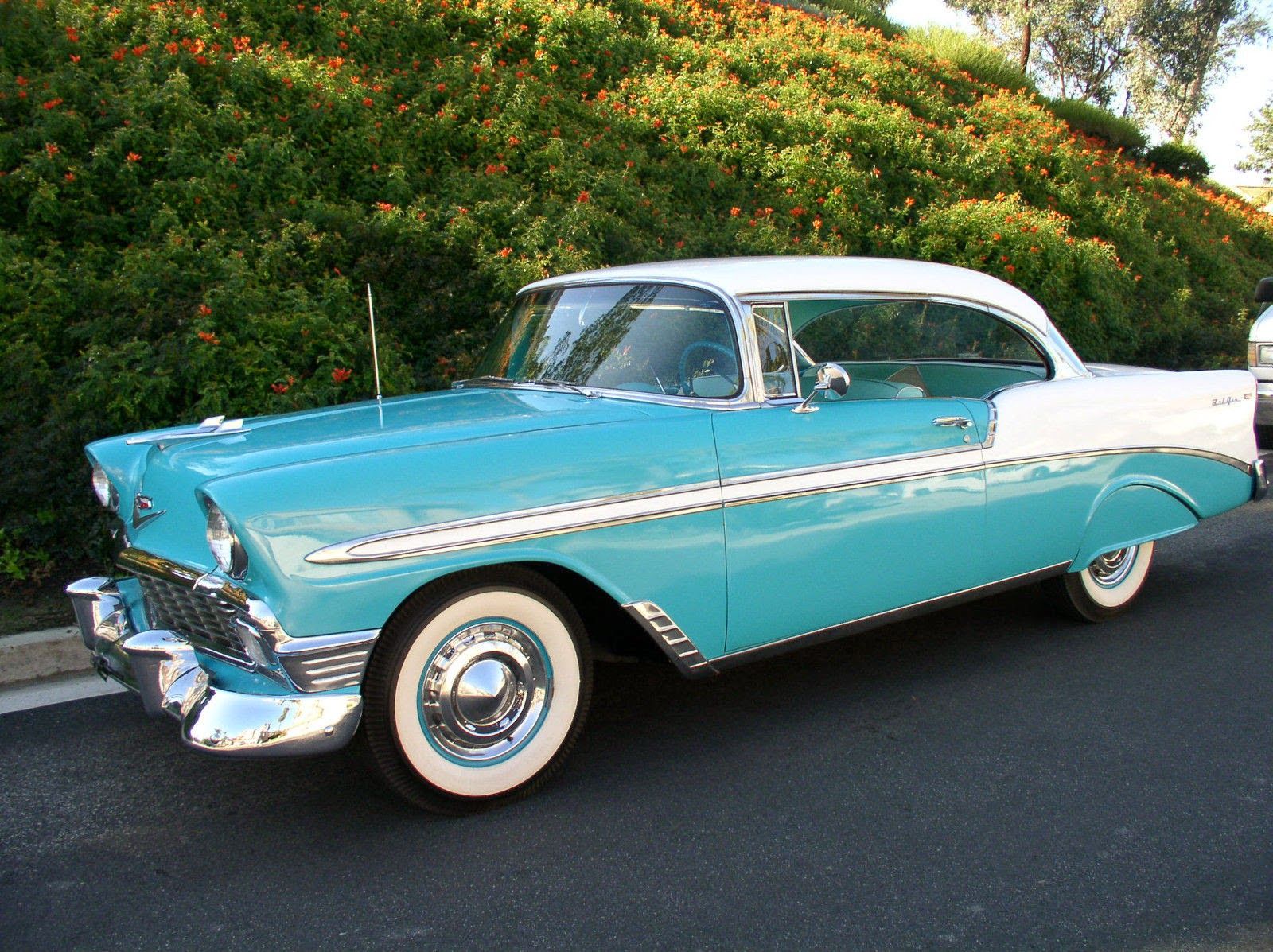
14. **Chevrolet Bel Air**The Chevrolet Bel Air stands as a true 1950s classic, radiating style and dripping with chrome, and for Baby Boomers, it was nothing short of the “American Dream with a steering wheel.” It was more than just transportation; it was a cultural icon, embodying the post-war optimism and the burgeoning highway culture of its time. Boomers remember it fondly, associating it with “pure nostalgia and family road trips,” representing an era of innocence and boundless possibility.
Boomers vividly recall the Bel Air’s lavish looks and spacious, comfortable interior, which often felt “like a lounge on wheels.” It was undeniably “designed for cruising, not just driving,” offering a smooth ride and reliable performance that made it a beloved classic. Its distinctive styling and luxurious appointments captured the essence of an aspirational lifestyle, where driving was an experience to be savored.
Yet, Millennials often find themselves “puzzled by its lavish looks,” struggling to reconcile the Bel Air’s opulent, chrome-laden aesthetic with their contemporary sensibilities. The sheer exuberance of its design, with its prominent tail fins and decorative flourishes, can appear as excessive or even a bit perplexing to a generation that generally favors cleaner lines and more understated design principles. Its design, while once cutting-edge, can feel overly ornate to modern eyes.
The “puzzling appeal” for Millennials stems from this aesthetic disconnect and the Bel Air’s focus on grandeur over what they perceive as practical efficiency. In an age where functionality and minimalist design are highly valued, the Bel Air’s expansive dimensions and decorative styling can seem out of step. It serves as a compelling example of how a vehicle’s cultural significance and design intent can be reinterpreted, and sometimes misunderstood, across different generational perspectives.
Car Model Information: 2021 Jeep Grand Cherokee Laredo X
Name: Chevrolet Bel Air
Caption: 1957 Chevrolet Bel Air convertible
Manufacturer: Chevrolet
Production: 1949–1980
ModelYears: 1950–1981
Class: Full-size
Layout: FR layout
Predecessor: Chevrolet Fleetline,Chevrolet Biscayne
Successor: Chevrolet Impala
Categories: 1950s cars, 1960s cars, 1970s cars, 1980s cars, Articles with short description
Summary: The Chevrolet Bel Air is a full-size car produced by Chevrolet for the 1950–1981 model years. Initially, only the two-door hardtops in the Chevrolet model range were designated with the Bel Air name from 1950 to 1952. With the 1953 model year, the Bel Air name was changed from a designation for a unique body shape to a premium level of trim applied across a number of body styles. The Bel Air continued with various other trim level designations, and it had gone from a mid-level trim car to a budget fleet sedan when U.S. production ceased in 1975. Production continued in Canada, for its home market only, through the 1981 model year.
Get more information about: Chevrolet Bel Air
Buying a high-performing used car >>>
Brand: Chevrolet Model: Bel Air
Price: $27,316 Mileage: 34,523 mi.
Read more about: Boomer Dream Machines: 14 Classic Car Icons Millennials Are Overlooking and Why They’re Missing the Mark
These explorations vividly illustrate how the allure of classic cars is not universal but deeply personal and generational. The vehicles that evoke profound nostalgia and admiration for Baby Boomers often face disinterest or even criticism from Millennials, whose values are shaped by different economic realities, environmental concerns, and technological advancements. While the specific attributes of these cars may divide generations, the underlying passion for automotive history and design, in its many forms, remains a fascinating common thread, constantly evolving yet enduring across the ages. The conversation about what makes a car ‘cool’ is, after all, a reflection of who we are and the world we live in.

